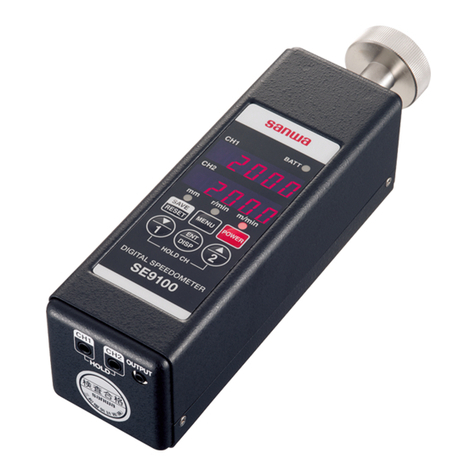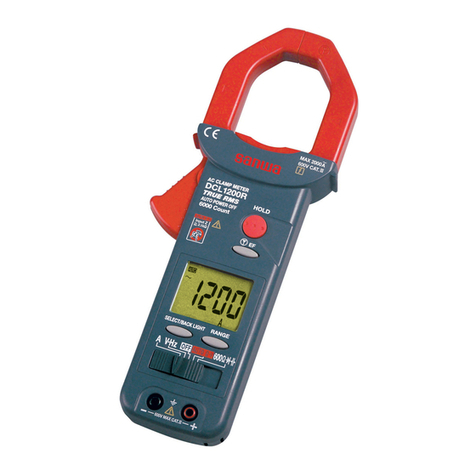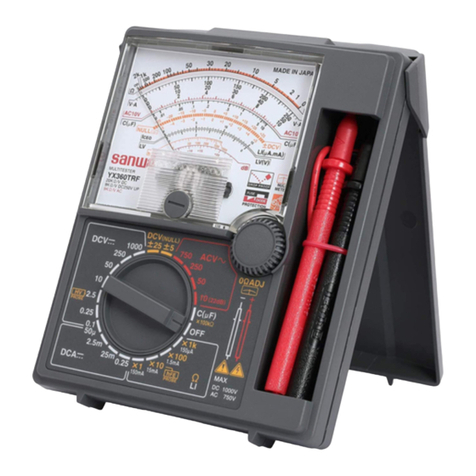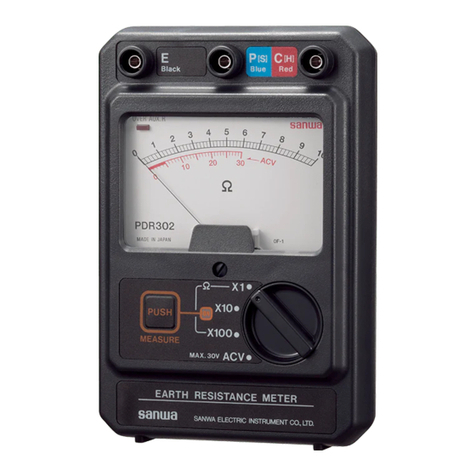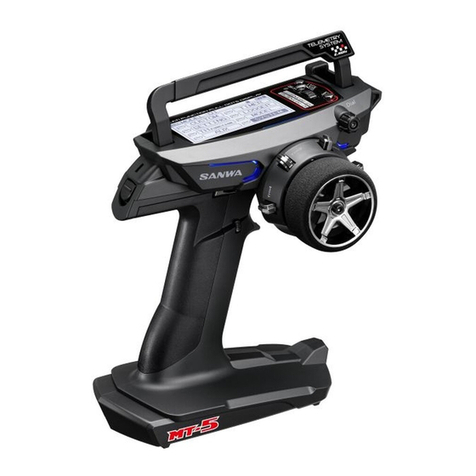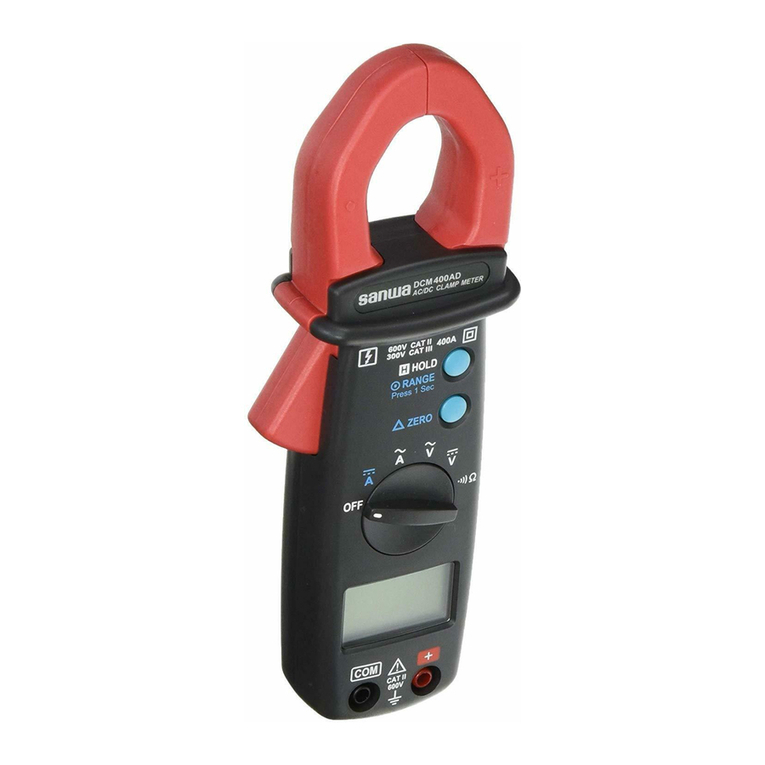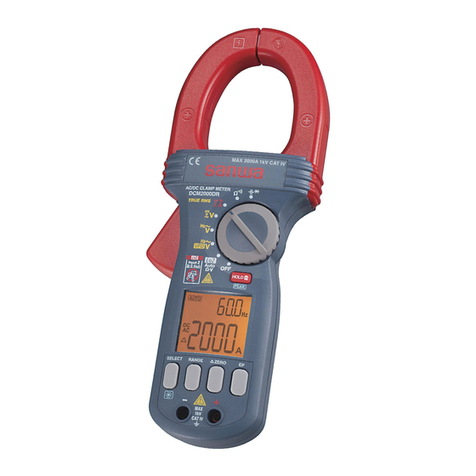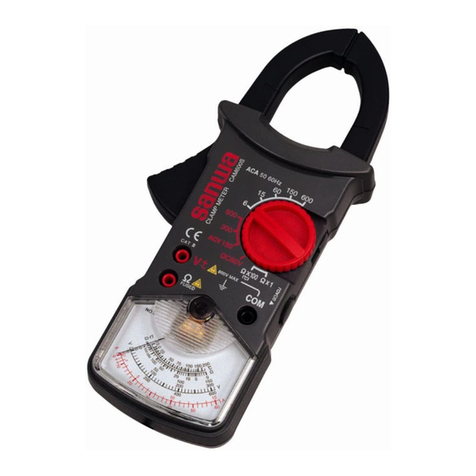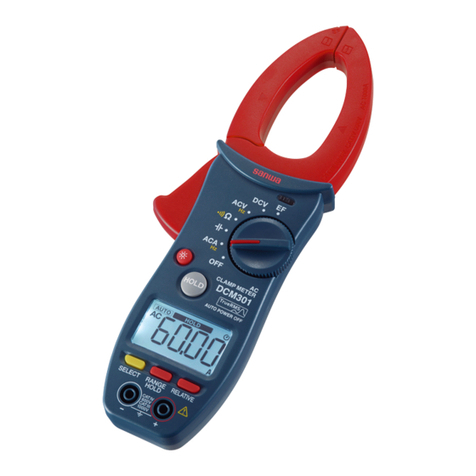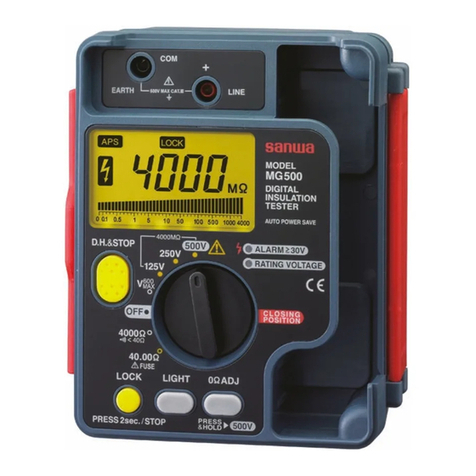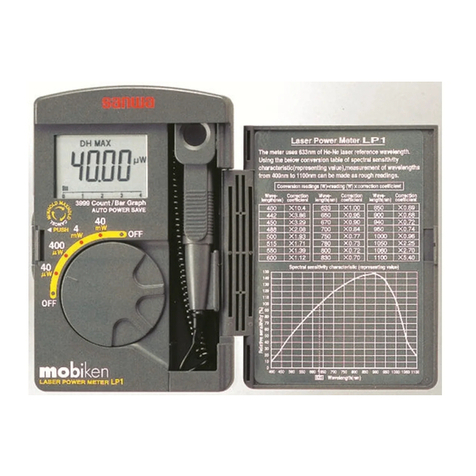
–9 –
4. When the measurement object has resistance of more than 2000
MΩ, the LCD shows the same over-input display as that displayed
when the measuring terminals are open, as shown in Fig. 1 under
section [4]4-2, “Checking the Built-in Batteries” on page 6.
5. After measurement, press the POWER switch again to OFF or
set the function switch to OFF.
NOTE: Distinction Between E and L Terminals
When one of the measuring points is grounded, connect it to the E
terminal of the instrument.
This is specified in consideration of safe use, because the resis-
tance measurement value reading in the insulation testing can be
reduced in this way. In other measurement operations, consideration
of the polarity of measurement points is not necessary.
NOTE: In Case the “B” Marking is Displayed During Measurement
When the resistance measurement value in an insulation test is
extremely small, the LCD sometimes shows the “B” marking which
is usually used as the battery alarm indicator.
In the present case, the “B” marking is displayed because an
extremely small resistance measurement value means consumption
of large battery current and the drop in capacity due to exhaustion
of the batteries causes the internal operating voltage to fall below
the specified level.
4-5 Measuring the AC Voltage (ACV)
1. The maximum allowable input voltage of the ACV range is
600 V. Never apply a higher voltage than this.
2. Voltages higher than 25 Vrms AC are hazardous to the
human body. Be very careful during measurement.
3. Never attempt to change the function switch position
during measurement.
4. Never measure AC voltage with a wet hand.
WARNING













